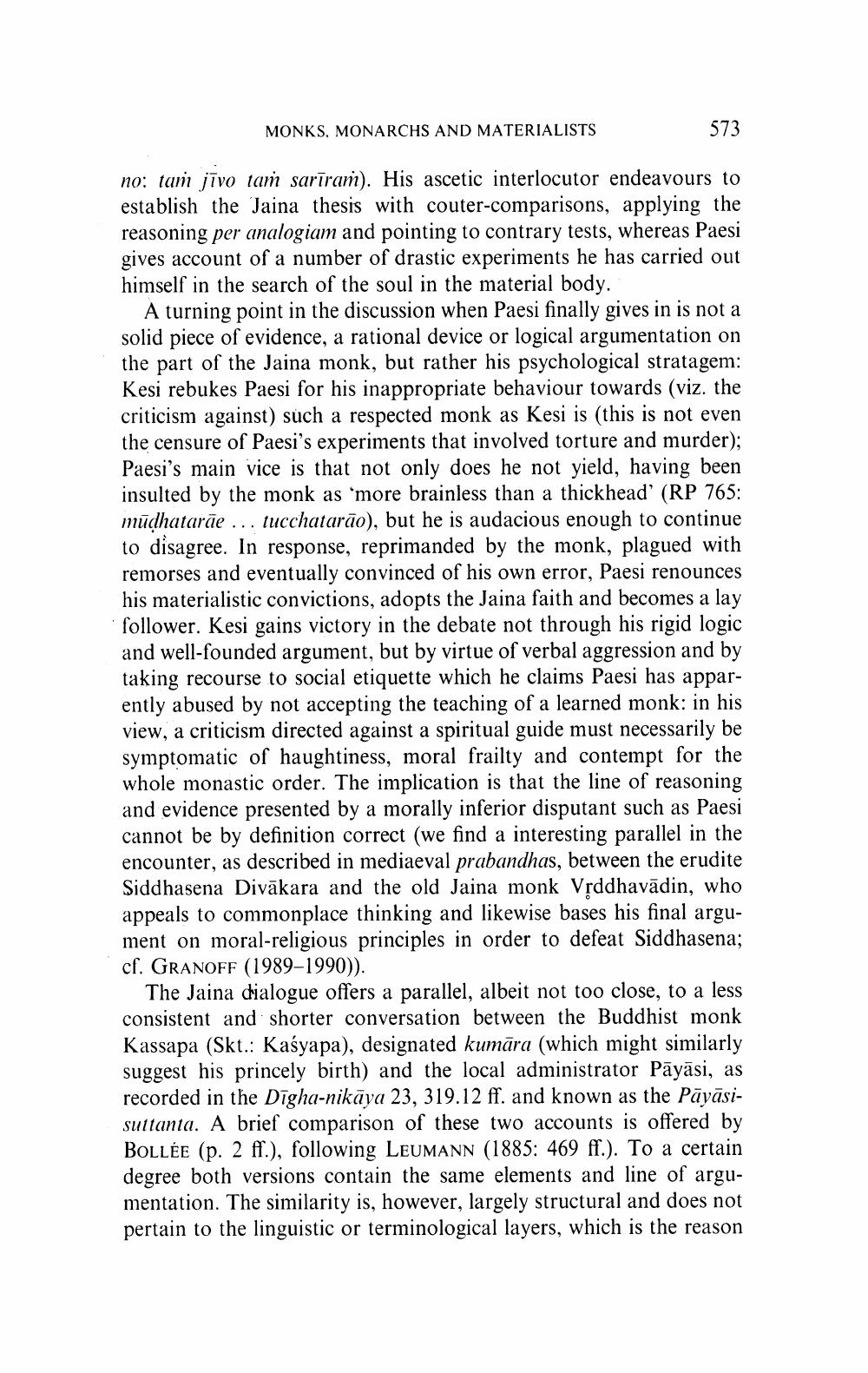Book Title: Monks Monarchs And Materialists Author(s): Piotr Balcerowicz Publisher: Piotr Balcerowicz View full book textPage 3
________________ MONKS, MONARCHS AND MATERIALISTS 573 no: tam jīvo tam sarīram). His ascetic interlocutor endeavours to establish the Jaina thesis with couter-comparisons, applying the reasoning per analogiam and pointing to contrary tests, whereas Paesi gives account of a number of drastic experiments he has carried out himself in the search of the soul in the material body. A turning point in the discussion when Paesi finally gives in is not a solid piece of evidence, a rational device or logical argumentation on the part of the Jaina monk, but rather his psychological stratagem: Kesi rebukes Paesi for his inappropriate behaviour towards (viz. the criticism against) such a respected monk as Kesi is (this is not even the censure of Paesi's experiments that involved torture and murder); Paesi's main vice is that not only does he not yield, having been insulted by the monk as more brainless than a thickhead' (RP 765: mūdhatarāe ... tucchatarāo), but he is audacious enough to continue ree. In response, reprimanded by the monk, plagued with remorses and eventually convinced of his own error, Paesi renounces his materialistic convictions, adopts the Jaina faith and becomes a lay follower. Kesi gains victory in the debate not through his rigid logic and well-founded argument, but by virtue of verbal aggression and by taking recourse to social etiquette which he claims Paesi has apparently abused by not accepting the teaching of a learned monk: in his view, a criticism directed against a spiritual guide must necessarily be symptomatic of haughtiness, moral frailty and contempt for the whole monastic order. The implication is that the line of reasoning and evidence presented by a morally inferior disputant such as Paesi cannot be by definition correct (we find a interesting parallel in the encounter, as described in mediaeval prabandhas, between the erudite Siddhasena Divākara and the old Jaina monk Vrddhavādin, who appeals to commonplace thinking and likewise bases his final argument on moral-religious principles in order to defeat Siddhasena; cf. GRANOFF (1989–1990)). The Jaina dialogue offers a parallel, albeit not too close, to a less consistent and shorter conversation between the Buddhist monk Kassapa (Skt.: Kaśyapa), designated kumāra (which might similarly suggest his princely birth) and the local administrator Pāyāsi, as recorded in the Dīgha-nikāva 23, 319.12 ff. and known as the Pāvāsisuttanta. A brief comparison of these two accounts is offered by BOLLÉE (p. 2 ff.), following LEUMANN (1885: 469 ff.). To a certain degree both versions contain the same elements and line of argumentation. The similarity is, however, largely structural and does not pertain to the linguistic or terminological layers, which is the reasonPage Navigation
1 2 3 4 5 6 7 8 9 10 11 12
